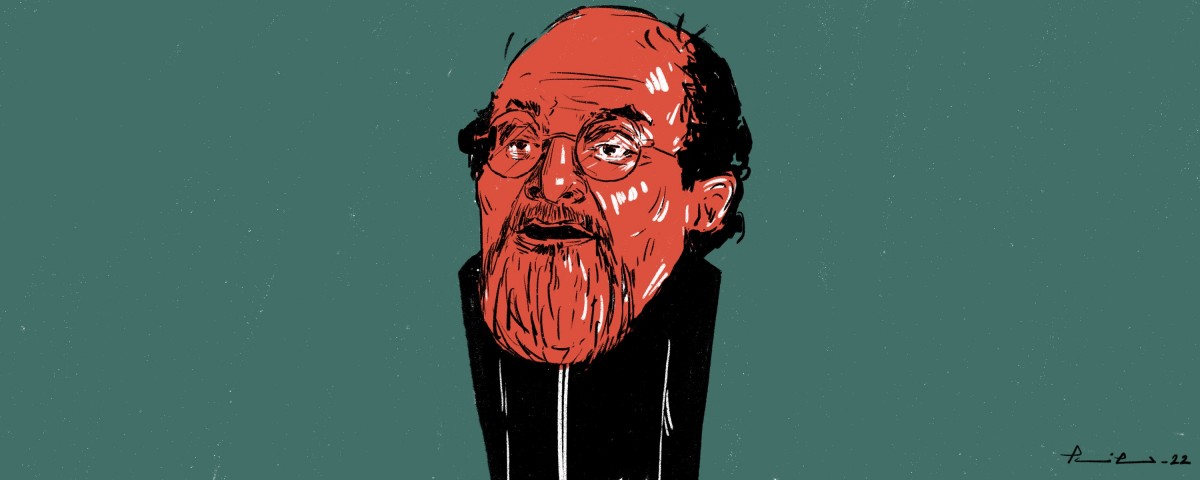Too often, the magic is the reality in the magical realist novel. The characters can be cartoonish, even stereotypical, yet they are living representatives of human reality.
Magic happened only in the books, not in the lives of the Latin American writers who pioneered the genre. Gabriel García Márquez, for instance, was a hard-boiled Leftist and Castro fan. All very prosaic, some would say. But India is different. Just ahead of the 75th year of Indian Independence, the man who sought to tell the story of India through the country’s very own tradition of magic was tragically mowed down by an absurdist fanatic.
Salman Rushdie gave India to the literary world when the nation meant poverty, pestilence and Gandhi. The book captured the khichdi that India was – the improbable stories, myths, horrors and sublime beauty amidst the dirt, noise, colour and hardships.
His Midnight’s Children was a tour de force – delivering India in a capsule to Indians during an era when they didn’t travel much and saw the rest of their country as a magical entity. Rushdie’s book had some of the most mindboggling situations, sequences that only magic can bring forth – and they challenged the one-track view of reality that is the basis for fanaticism.
The gossip that was whispered in India carried Midnight’s Children forward. Saleem Sinai was Muslim but he was actually Hindu. There’s more: He was actually a cross between an Englishman and a peripatetic gypsy woman. So the Indian protagonist of Rushdie’s novel was everybody and nobody at the same time. The man who truly represents India can only be improbable.

Actor Satya Bhabha as Saleem Sinai, in the still from Deepa Mehta’s adaptation of ‘Midnight’s Children’.
Gossip is history. The talk in Kashmir was that Sheikh Abdullah’s father was actually Lawrence of Arabia who spent some time in Kashmir when he needed a break during his empire-building sojourn among the Arabs. And the father of Sheikh Abdullah’s son was actually Jawaharlal Nehru.
Midnight’s Children was based on such careless whispers.
Saleem was exchanged at birth with Shiva but in truth he was the son of William Methwold, a British resident of Bombay before it was Mumbai. Rushdie was probably saying the real India was actually a child of the British. Just as Saleem was not the son of his father, his son was actually Shiva’s, his Hindu alter ego. In the book, the sons will never be their fathers’ for eternity.
Talk of endless return!
Also read: The Pain of Partition, as Seen in the Literature of Many Languages
In today’s world, Facebook has provided publishing credibility to such malicious gossip. WhatsApp University has decreed that Jawaharlal Nehru was Muslim. Where else but the land of magic can fake news thrive so well. We Indians are born for half-truths, untruths and rumours.
In its core, Rushdie’s book draws on how paternity, clan and community, though seemingly strictly laid out, were always fluid in India since its ancient days. In the Mahabharata, for instance, princesses often bedded men who were not their husbands. The father of the son couldn’t be named publicly but the epic unabashedly outed the secret.
For a writer who traced his origins to a region where Bhatts, Pandits and others with ‘Brahmin’ names could turn out to be Jihadists, the fluidity of Kashmir’s religious identity spoken through Nehru and Sheikh Abdullah was Midnight’s Children’s main magic. Was Rushdie the last Kashmiri Muslim who spoke passionately for India?
Midnight’s Children served India as it was and is. In the book, the Jallianwala Bagh massacre was just mercurochrome splashed on people. Was Rushdie denying British brutality? Surrealism was the only way the horror could be presented fully.
The south was dismissed as ‘kaalu’ – the black ones. Saleem Sinai’s mother had to be dark-skinned since the protagonist had to born out of a union between north and south. Midnight’s Children was calendar art.
After many failed romances and crushes, Saleem Sinai eventually shacks up with yet another Indian stereotype: the dark-skinned southern woman with hairy forearms. She is the woman of his life: Padma, the dung goddess. Magic was here foretold. Years later, Salman Rushdie married a south Indian named Padma.
Also read: August – The Month of Death
Rushdie wrote in the book that India was a dream that we all agreed to dream. How else could a nation so diverse, with few of the characteristics of a nation, be a nation? We Indians willingly agreed to dream that we were one, he said. But, today we are told we are indeed one. And diversity is maya.
In those days an Indian Muslim could write a book imagining a Muslim boy as the Indian archetype. It was a time an Indian Muslim could still fool himself that partition had done nothing to the idea that the Muslim had an equal stake in Hindustan.
In today’s India, the south is standing tall while the east is forcing its way on to the stage as Hindu nationalist, incongruously enough, even as the north has regressed to assert its dominance.
Today’s India is not that country of midnight’s children. Gandhi and Nehru are passé. It was eerie and poetic but nastily magical that Salman Rushdie had a brush with death a few days before the grand celebration of India’s 75th year. Magic, once more, reminds us of reality.
M. Kalyanaraman is editor of inmathi.com.
The featured image is an illustration by Pariplab Chakraborty. To view more such illustrations, click here.
This article was first published on The Wire.

